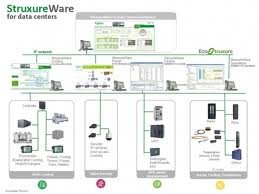Energy management specialist Schneider Electric has added a module to its data center infrastructure management (DCIM) suite to make data center cooling systems more intelligent.
The Data Center Operation: Cooling Optimize module, for the StruxureWare suite, will add intelligence to existing data center cooling systems enabling energy reduction and lower cost of operations, while also reducing the risk of cooling incidents.
Stop over-cooling, people
“Most data center cooling systems are specified to ensure that the hottest racks in the facility have a sufficient cold air supply,” said Soeren Brogaard Jensen, vice president, enterprise software and managed services at Schneider Electric. “This results in a large amount of energy being wasted as the entire facility is over-cooled to provide this legacy design capacity. For the managers of these data centers, it is impossible to consider how to reduce the amount of cooling without introducing risk of thermal shutdowns because they lack the information to do so safely.”
The module lets data center managers understand the complexity of airflow within their facilities, including all heat sources, cooling influences and dependencies.
It is a closed-loop system, meaning that it learns from any actions such as inlet temperature adjustments, or equipment adds, moves and changes to the IT load, to keep the data center cooling continuously optimized.
Once deployed, Cooling Optimize enables operators to monitor the real-time status of data center health and determine the impact of any cooling event.
This also enables situations such as overheating, hotspots and capacity issues to be predicted and avoided. By continuously analyzing use, future capacity requirements can be planned for, and stranded cooling capacity eliminated.
The module automates a response to changes in the data center environment to reduce hot spots (where load requirement exceeds cooling), and wasted energy (where cooling exceeds what is actually needed).
Schneider reports that a large Pacific telco tested the module in a single room of its data center, allowing it to turn off 13 CRAC units once installation and configuration was complete, saving 37 percent in average power use in the first year of operation. With the investment paid back, the customer is now rolling out the module throughout its data center campus.
The module combines retrofit software which learns intelligently, and wireless sensors in data center racks. Jensen says it will let data center managers get closer to the American Society of Heating, Refrigerating, and Air-Conditioning Engineers (ASHRAE) inlet temperature guidelines, ”without risk to availability and without any investment in existing cooling systems. In use, they can anticipate up 40 percent reduction in cooling costs.”


